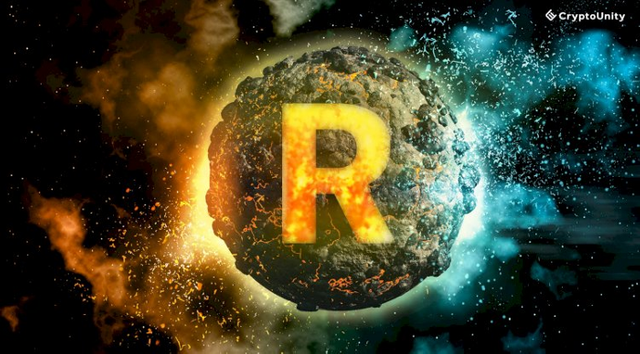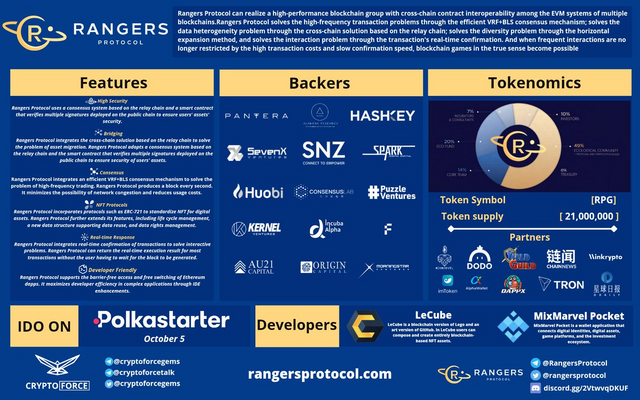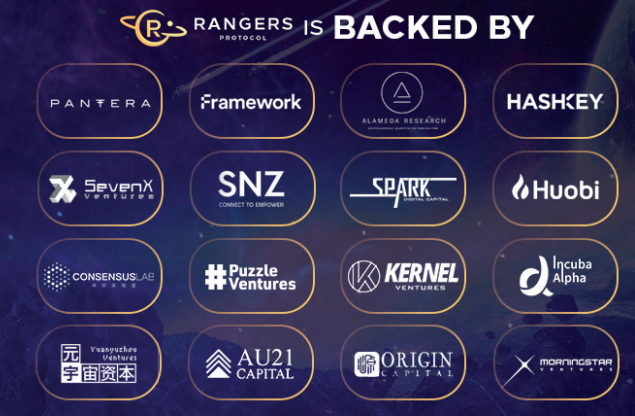
Rangers Protocol is an Ethereum-compatible distributed signature technology-based blockchain infrastructure that upholds the creation of complex decentralized applications. Albeit numerous blockchain infrastructures additionally provide incomplete arrangements, they don't have characteristics like robustness, similarity, and ease of use. Moreover, they often regard the replacement of Ethereum as the infrastructure of decentralized finance as their essential objective, rather than devoting themselves to building an Ethereum-compatible, widespread application-friendly infrastructure.
Rangers Protocol is a future virtual-world-sealing blockchain infrastructure completely compatible with Ethereum and natively upholds NFT and complex applications. We integrate cross-chain, NFT, and EVM conventions and expand on this premise, permitting developers to freely create complex decentralized applications that adjust to different scenarios while giving users an experience like Internet applications.
We have join an efficient VRF+BLS consensus mechanism to solve the disappointment of high-frequency trading. Rangers Protocol produces a square every 1 second. Compared with the conventional PoW creation including in minutes, the efficiency is increased hundreds of times. Furthermore, this efficient consensus algorithm reduces the chance of network congestion and reduces usage costs. We have additionally integrated a cross-chain arrangement based on distributed signatures to solve asset relocation problems. One of Rangers Protocol's dreams is to become the bridge for blockchain assets' flow and connect different public chains. As a result, computerized assets will run as expected between Rangers Protocol and public chains based on the concept of decentralization. For fiats that pass through Rangers Protocol – whether they are public chain fiats locked to Rangers Protocol or public chains – we have adopted a distributed signature-based consensus system and smart agreements deployed on open chains that verify distributed signatures to ensure the safety of users' assets. Besides, we integrated a real-time affirmation mechanism to solve interaction efficiency problems. In Ethereum, due to the uncertainty of the record status caused by the delicate fork mechanism, developers often need to decide which account status is the last state based on experience. For example, the normal standard requires trusting that six squares will be generated before giving affirmation. Likewise, under this nonconcurrent/holding up mechanism, dapp developers often need to get back to/survey/subscribe to messages to process business rationale, in opposition to mainstream developers' propensities. Conversely, Rangers Protocol can return the execution results in real-time for most exchanges without users trusting that the square will be generated. Rangers Protocol gives a synchronization mechanism for founders and IT programmers that is easy to understand and use. We have incorporated conventions, for example, ERC-721 to standardize the information structure of computerized asset NFTs. On its premise, Rangers Protocol has expanded its features, including life cycle management, a new information structure that upholds information reuse, and information freedoms management based on decentralized applications. By integrating different underlying technologies, we have developed Rangers Protocol into an infrastructure that can incorporate monetary, semi-monetary, and surprisingly non-monetary dapps.
Rangers Protocol Architecture

Generally speaking, the ecological architecture of Rangers Protocol can be summarized into five layers, namely:
Application service: Includes identity, privileges, information services, key management, asset management, exchanges, shops, organizations, lends, barters, undertakings, achievements.
Similarity service: Web3 RPC — Remote Procedure Call (compatible with MetaMask), Remix (compatible with Ethereum contract), SDK — Standard Development Kit (compatible with Ethereum SDK), REVM — Rangers Ethereum Virtual Machine (compatible with Ethereum EVM).
Cross-chain convention (Rangers Connector): Consensus module (VRF+TSS), node module (full node of the beginning chain and target chain), cross-chain exchange module;
Elite convention (Rangers Engine): consensus module (VRF+BLS), node module (proposition and verification node), VM module, NFT convention module, storage module;
Network convention (p2p Network): timing module (universally unified nonce), synchronization module (responsive).

For more information
WEBSITE: https://rangersprotocol.com/
WHITEPAPER: https://www.rangersprotocol.com/pdf/RangersProtocolWhitepaper.pdf
FACEBOOK: https://www.facebook.com/Rangers.Protocol
TWITTER: https://twitter.com/rangersprotocol
TELEGRAM: https://t.me/RangersProtocolAnnouncement
Discord : https://discord.com/invite/2VtwvqDKUF
Author
#PROOF OF REGISTRATION
Forum Username: Rashy23
Forum Profile Link: https://bitcointalk.org/index.php?action=profile;u=3370686
Telegram Username: walexy23
Participated Campaign: Article
BSC Wallet Address: 0x769dCFc6a98F28F641EC0e943C2DB42ab7B8844f